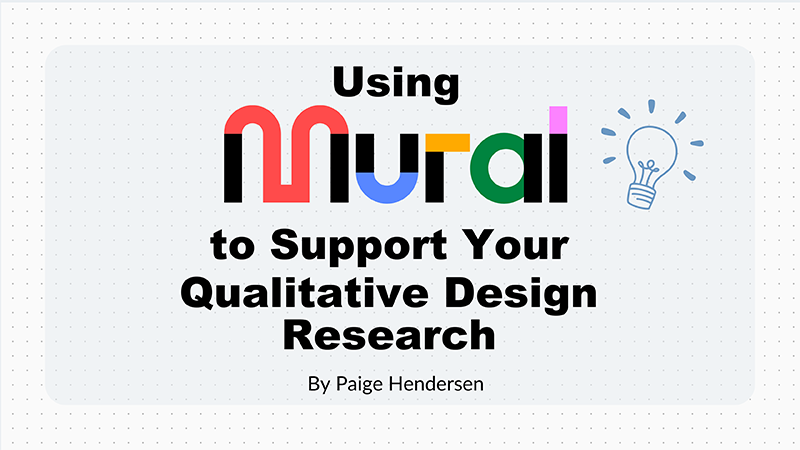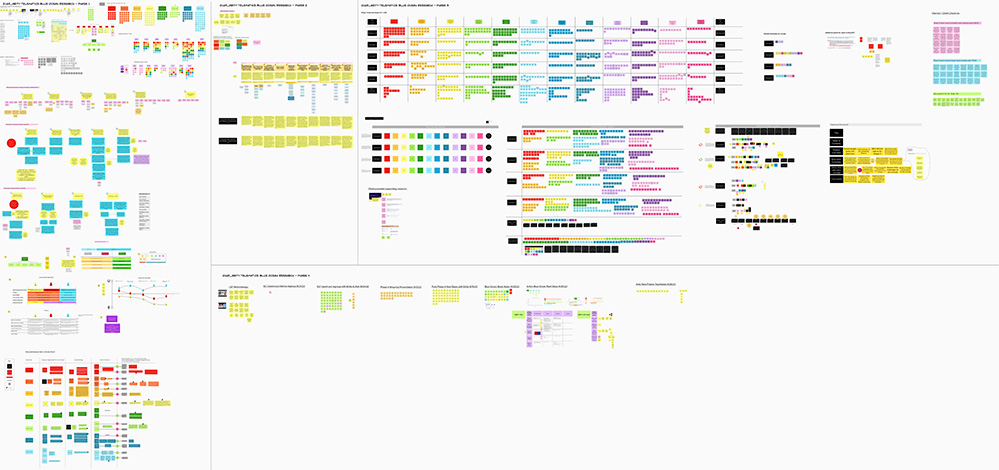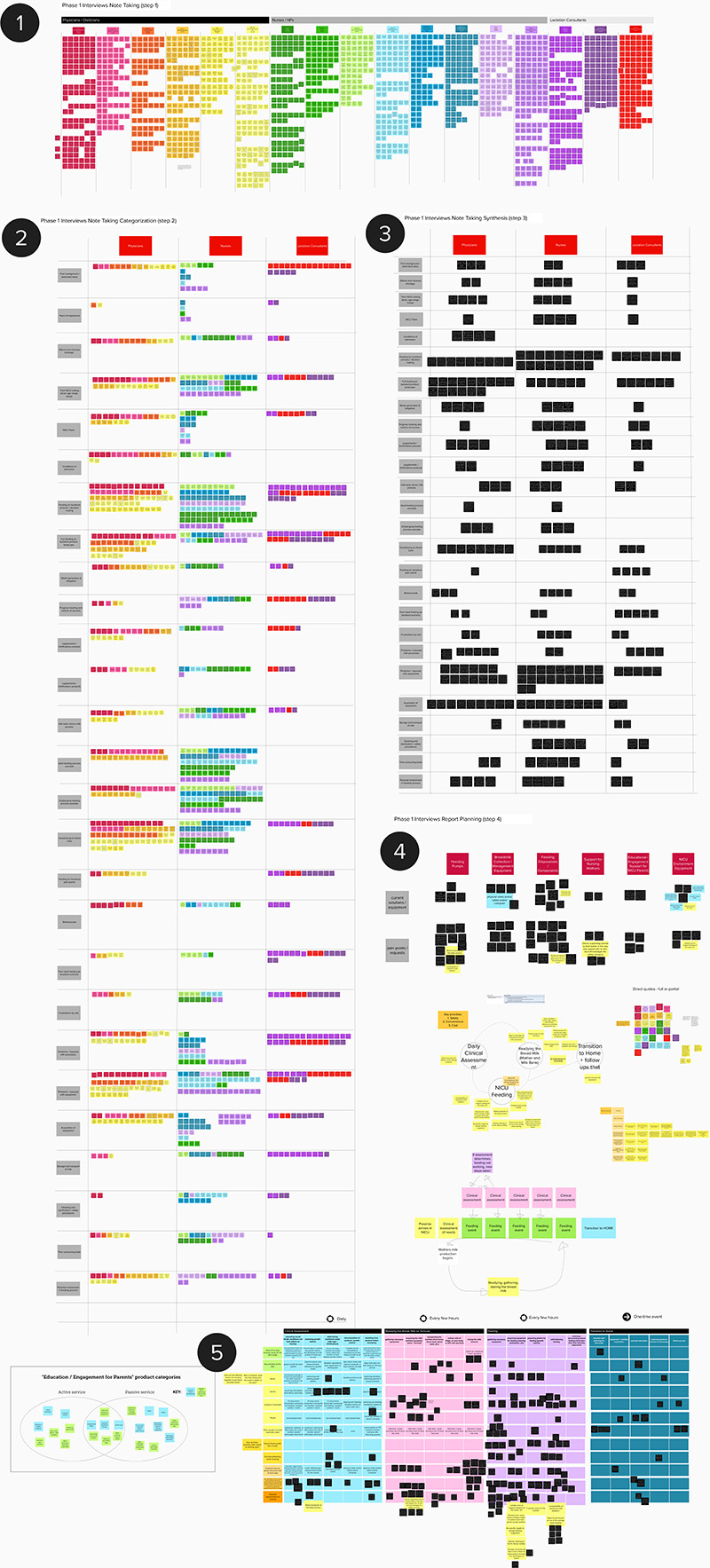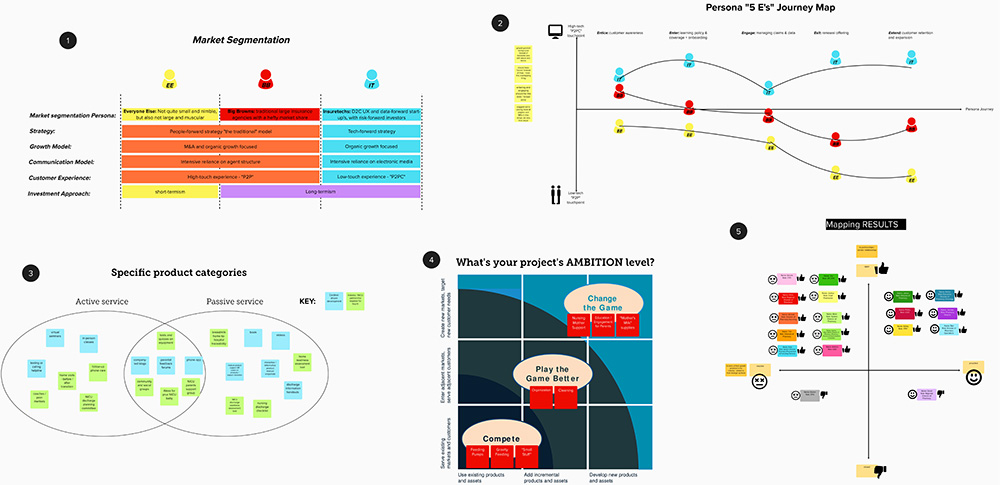


I will admit - the sentiment underpinning the phrase “Sylver’s magic” makes me smile. But I’m going to let you in on a little secret… magic it is not. Quite to the contrary, how we yield “Sylver’s magic” in analysis and synthesis is quite formulaic.
At Sylver, we’ve figured out just the right formula for successful qualitative design research in an increasingly digital world. Was it luck? Not quite!
We’ve had over a decade of experience conducting primarily remote research. Our tried-and-true process calls for a combination of ingredients - marrying online platforms such as the Google Suite, Zoom, Recollective, Qualtrics, and my personal favorite… Mural!
Let me enlighten you on why Mural is the “cherry on top” of that scrumptious recipe for innovation-driven research. I have a few lucky tricks up my sleeve to share that might just support you in your next qualitative research project!
Gone are the days - thanks to the pandemic - of getting a cross-functional team into a room for analysis and synthesis. We now turn to Mural to synthesize the creation of “digital war rooms”. Every project gets its own internal Sylver Mural board. It essentially becomes the epicenter for meeting notes, secondary research, project management, user interviews, and sense-making activities like framework development, insight generation, or ideation. Figure 1 below is an example of a recent project Mural board I created that encompassed six months of work on a four-phased client project.

Note: we use Mural’s “outline” feature to support easy navigation of the board. Mural activity will look different for each project phase. For example, one phase of your project may entail open-ended user interviews, capturing observations on scores of stickies. Another phase could be around concept evaluation, where you have a grid of pros and cons. I err on the side of capturing too much information as opposed to not enough, leaving no room for questions as to where data came from throughout the research process.
Mural board set-up will vary based on project, but in my Mural boards you’ll see four key sections of content: background research, interview notes, analysis and synthesis, then sensemaking activities. It’s quite like a colorful rainbow leading to the lucky “pot of gold” at the end of a project - the rich, actionable insights that are derived from our research!
Every project will start with background research, which could include notes and resources from stakeholder alignment conversations, relevant industry articles, or a library of website links around the content we’re researching. I add resources to this area throughout the duration of the project.
The most dense section of the board will be a table of notes from in-depth interviews. The columns are the different people you interviewed, and the rows are the questions they’ve answered. The data in the table includes individual stickies capturing interviewee responses.
My five recommendations to set yourself up for success using Mural for qualitative research note-taking include:

After interviews have concluded, I continue to use the project Mural board to make sense of qualitative observations. I’ll engage in affinity mapping where I create “buckets” of the themes I’m finding within the data. I copy and paste all interview notes in a new area, then drag individual notes into themed buckets as they emerge. I’ll delete or condense notes wherever overlap is presented. I generally pull unique or one-off cases to the side; focusing on the repeated learnings.
You can analyze your qualitative data in terms of a variety of buckets - some of my go-to categories being around: interviewee values, pain points, modes of behaviors, process steps, or activities. These buckets allow me to create generalized statements around each theme that address research objectives. At this point, I’ll turn all stickies into a single, new color (like the black and gray seen in Figure 3 below) to understand that they are NOT linked back to individual data, but rather represent the view of a collective pool of respondents. Figure 3 below shows a seemingly messy brain dump of stickies that went through the refining funnel of observations, to themes, then insights.

I consider this part of the Mural board a storyteller’s sandbox. Within it, you’ll find a number of frameworks or templates like a user journey map, persona framework, task analysis diagram or a service blueprint - to name a few. This is the space in the Mural board where our team is “trying on for size '' different ways of communicating the insights emerging from the data with clients. Eventually some things make it out of the sandbox and into the client report, and others do not. Figure 4 below shows five simple frameworks employed to make sense of qualitative interview findings for a project, largely around characterizing industry personas. We were lucky in that one of the frameworks really “held true” and was refined for the polished client deliverable.

It is important to recognize that you rarely have to start from scratch when setting up frameworks to process your information in Mural. Mural has thousands of templates for every situation. You can search keywords and often find what you need, but for a place to start here are some of my favorite templates publicly available in Mural.
“Interview users of a product or service” by LUMA Institute
This simple board helps you capture direct notes for a series of qualitative interviews. The information hierarchy of having the interview stats at the top and questions sectioned for direct notes is helpful. It also includes interview tips, questions to consider asking, and room for your team to regroup and discuss key takeaways which is vital in processing observations.
“Persona profile” by LUMA Institute
Use this template to consolidate archetypal descriptions of user behavior into representative profiles. Be sure to pull a variety of direct quotations for each persona.
“Empathy map canvas” by Xplane
Take the luck out of it by letting this board guide your empathy mapping to articulate what you know about a particular type of user. This will create a shared understanding of their needs and decision-making processes - where your key focus to derive insights lies in what they “say”, “think”, “do”, and “feel”.
“Service blueprint” by Mural
This framework walks your audience through the 5 E’s of a customer journey, mapping the experience both front-of-house (for users of a service) and back-of-house (service providers or behind the scenes players).
“Strengths, weaknesses, opportunities & threats” by Mural
This simple framework guides you in executing a SWOT analysis for one or multiple products, services, or projects. It’s best to complete this in a collaborative manner with project stakeholders to action next steps based on data findings. I recommend adding key project insights to the top of this template to reference during the activity.
“Jobs to be done Journey Map” by E*Trade
For me, research synthesis is a visual process and using frameworks within Mural helps me articulate and communicate research insights in a way that really matters and resonates with the goals of my stakeholders and their project.
Now it’s time for you to explore this tool! Mural can truly be your one-stop-shop throughout the research journey, as I’ve shared in this blog post. I encourage you to make your free account . Start a board for your next project, and share your learnings with us!
I’d love to hear, as you begin to explore Mural as a tool — how is Mural enhancing and evolving your research process?
Let’s keep the conversation going by emailing me!
Paige Hendersen is a Design Researcher at Sylver. She engages in human-centered design research to understand stakeholder needs and translate them into actionable insights for Sylver's clients. On a daily basis, this looks like creating discussion guides and research stimuli, conducting user interviews, supporting quantitative market research, and making frameworks to directly convey findings to clients. Paige graduated from Northeastern University with a degree in Mechanical Engineering. She also recently received her masters from Northwestern University in Engineering Design Innovation. 
5 Ways to Cultivate "Power With" Energy in the Workplace
Do you know the difference between "Power Over" vs. "Power With" leadership?
Reach out to set up a free discovery call. On this call, we’ll get clear on your scope of work to be tackled, how your initiative ladders to a broader business goal of your organization, and assess — without attachment — if Sylver Consulting is a “best fit partner” to support you in your scope of work.



